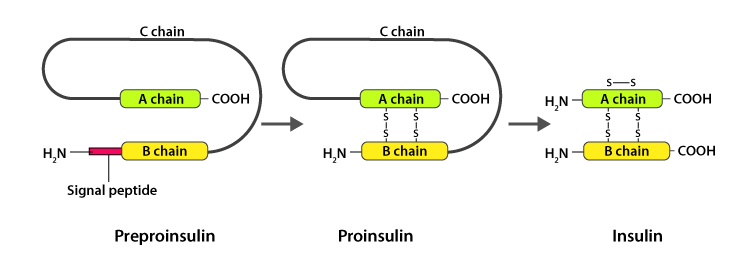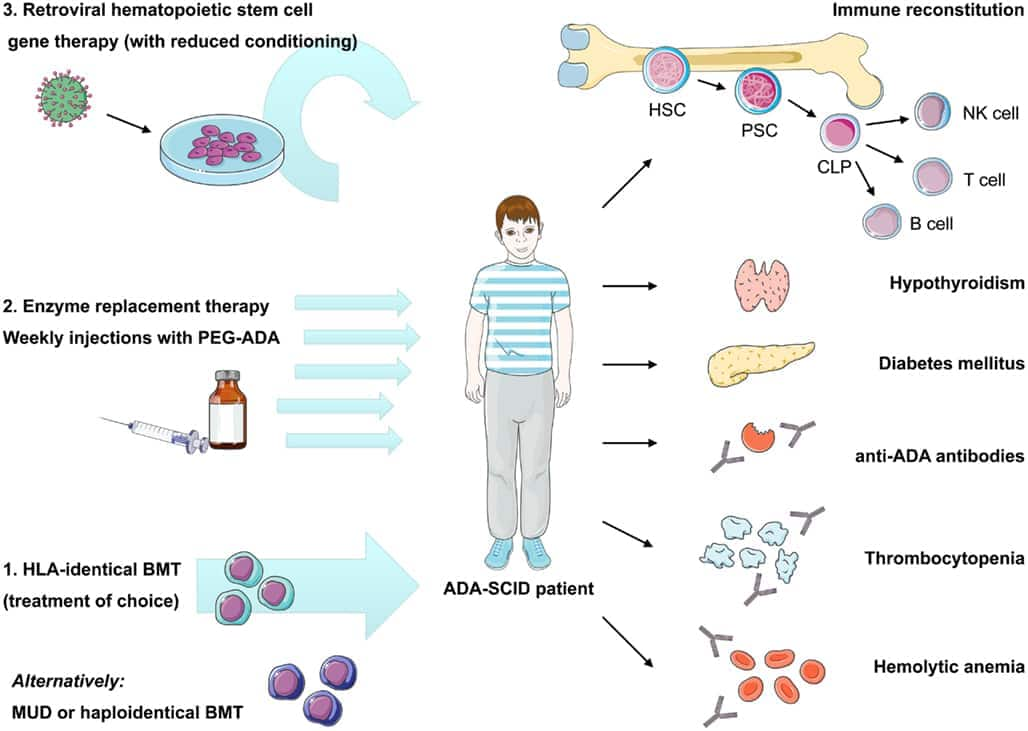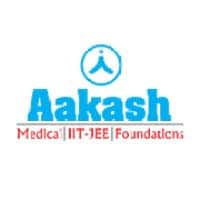Aakash Repeater Courses
Take Aakash iACST and get instant scholarship on coaching programs.
The NCERT Solutions for Class 12 Biology Chapter 10 Biotechnology and Its Applications teaches students about the various applications of biotechnology in agriculture, medicine, and industry. This chapter also explains topics such as genetically modified organisms (GMOs), gene therapy, biopesticides, and biofertilizers. It discusses how biotechnology can be used to improve crop yield, produce vaccines, and address issues of waste and pollution. The NCERT solutions explain the chapter very easily with a proper explanation of difficult concepts, which is beneficial for the students.

The Class 12 Biology Chapter 10 Solutions help students understand how biotechnology is used in their day-to-day lives. Going through the NCERT Solutions Class 12 Biology helps students understand all the applications and processes easily without any confusion. All the answers are provided in a simple manner that prepares students for further studies as well as for real-life applications. They can also download the Class 12 Biotechnology and Its Applications NCERT PDF for proper guidance during exams.
Also Read
NCERT Exemplar for Class 12 Biology: Biotechnology and Its Applications
NCERT Notes for Class 12 Biology: Biotechnology and Its Applications
Students can download the complete questions with detailed answers in a PDF of the Biotechnology and its applications chapter for better learning. The NCERT Solutions for class 12 is a valuable resource for students to score well in their exams.
The detailed answers to all the questions in this chapter are given below. Through regular practice of Class 12 Biology Chapter 10 question answer, students can understand the important concepts related to biotechnology.
Ques 1: Which part of the plant is best suited for making virus-free plants, and why?
Ans: Meristematic tissue (e.g., shoot apical meristem) is most appropriate for the production of virus-free plants since it is generally free from viral infections. This is because viruses find it difficult to reach actively dividing cells in the meristem.
Ques 2: What is the major advantage of producing plants by micropropagation?
Ans: Micropropagation enables one to produce large numbers of genetically uniform plants rapidly. It can be applied for the propagation of disease-free plants and the conservation of rare or endangered species.
Ques 3: Find out what the various components of the medium used for propagation of an explant in vitro are.
Ans: The medium used for in vitro propagation includes nutrients like sucrose (source of energy), minerals (such as nitrogen, phosphorus, and potassium), vitamins, plant growth regulators (auxins and cytokinins), and agar (gelling agent).
Ques 4: Crystals of Bt toxin produced by some bacteria do not kill the bacteria themselves because-
(a) Bacteria are resistant to the toxin
(b) The toxin is immature
(c) Toxin is inactive
(d) Bacteria enclose toxins in a special sac.
Ans: Bt toxin crystals formed in bacteria do not kill the bacteria because the toxin is inactive. The Bt toxin is in an inactive state inside the bacteria and is only activated when it is ingested by insects, where it is activated by the alkaline pH of the insect gut.
Hence, the correct answer is (c) Toxin is inactive
Ques 5: What are transgenic bacteria? Illustrate using any one example.
Ans: Transgenic bacteria are those whose genomes have been altered by recombinant DNA technology to include foreign genes. A good example is transgenic E. coli, which has been genetically modified to produce human insulin by the introduction of DNA sequences encoding the A and B chains of insulin, thus allowing it to synthesise insulin for the treatment of diabetes.

Ans: The following table shows the advantages and disadvantages of GM crops:
Advantages | Disadvantages |
Increased productivity and yield | Potential risk to wild species due to transgenes |
Enhanced nutritional quality (e.g., golden rice) | Possible allergenicity and transfer of antibiotic resistance markers |
Insect pest resistance reduces chemical pesticide use | Environmental concerns regarding genetic contamination |
Tolerance to abiotic stresses (drought, salinity) | Impact on biodiversity and ecosystem balance |
Reduced post-harvest losses |
Ans: Cry proteins are insecticidal proteins carried by the cry genes, which are produced by the bacterium Bacillus thuringiensis (Bt). They are toxic to many insect larvae, especially those belonging to the order Lepidoptera. Humans have utilised Cry proteins by transferring the cry genes into genetically modified crops like Bt cotton and Bt brinjal, rendering them resistant to certain insect pests.
Ques 8: What is gene therapy? Illustrate using the example of adenosine deaminase (ADA) deficiency.
Ans: Gene therapy includes methods to fix or substitute faulty genes that cause disease occurrence. ADA deficiency, for example, is a result of a mutation in the gene for the adenosine deaminase enzyme. In one important case, a 4-year-old patient received gene therapy in which his lymphocytes were grown, a viable ADA cDNA was introduced with a retroviral vector, and afterwards, these converted cells were administered back into the patient's circulation. The diagram given below illustrates gene therapy for Adenosine deaminase deficiency.

Ans: Below is the diagram to represent the steps in DNA cloning.
A diagrammatic representation of the steps in DNA cloning

Ans: By recombinant DNA technology, it is possible to silence genes involved in the synthesis of glycerol and fatty acids in seeds, thereby lowering or even abolishing oil content (hydrocarbons). This is possible through methods like RNA interference (RNAi).
Ques 11: Find out from the internet what golden rice is.
Ans: Golden rice is a genetically modified rice variety engineered to synthesise beta-carotene, the precursor of vitamin A, in its endosperm instead of merely in its leaves. This was achieved by introducing two genes: psy from daffodil (Narcissus pseudonarcissus) and crtI from the bacterium Erwinia uredovora, both driven by endosperm-specific promoters.
Ques 12: Do our blood has proteases and nucleases?
Ans: Blood has no proteases or nucleases; rather, it has protease inhibitors that safeguard proteins from breakdown by proteases when circulating.
Ans: To prepare orally active protein drugs, proteins or peptides are encapsulated in liposomes along with penetration enhancers for oral administration. The principal difficulty encountered is that the proteins can be hydrolysed by the proteases of the stomach before exerting their therapeutic action, which requires alternative routes of administration directly to target locations.
Also, check the NCERT Books and the NCERT Syllabus here:
Take Aakash iACST and get instant scholarship on coaching programs.
To solve the textbook questions effectively, one needs to understand the concepts first. The chapter has important terms, such as GM crops, genetically engineered insulin, and transgenic animals. To understand these terms and their definitions clearly, students can refer to the NCERT Solutions for Class 12 Biology Chapter 10 Biotechnology and its Applications. Making notes of the chapter is important, highlighting all the important key points. Class 12 Biotechnology and its Applications NCERT PDF includes all the solved exercise questions, with to-the-point answers and necessary information. Therefore, one should practice these solutions to have an overall idea of the chapter and to answer the questions in the exams.
NCERT Exemplar Class 12 Solutions
Given below is an important question from this chapter, which helps students understand how questions are framed in the exam. For more such questions, students can refer to the Biotechnology and Its Applications Class 12 NCERT Solutions.
Question 1: Which of the following steps are catalysed by Taq DNA polymerase in a PCR reaction?
Denaturation of template DNA
Annealing of primers to template DNA
Extension of the primer end on the template DNA
All of the above
Answer:
The extension of the primer end on the template DNA occurs during DNA replication or PCR amplification. Once the primer binds to the template strand, DNA polymerase extends the primer by adding complementary nucleotides to the growing strand. This process occurs in the 5' to 3' direction, with the polymerase synthesising the new strand based on the template sequence. The extension continues until the entire segment of DNA has been replicated or amplified.
Hence, the correct answer is option (3) Extension of the primer end on the template DNA
NCERT Solutions for Class 12- Subject-wise
Provided below is a table that includes all the topics that students have to study beyond the NCERT for the NEET exam. To gain clarity on the topics, students can refer to the Biotechnology and Its Applications Class 12 NCERT Solutions. This includes all topics in a detailed manner.
Concepts | NCERT | NEET |
✅ | ✅ | |
✅ | ✅ | |
✅ | ✅ | |
✅ | ✅ | |
✅ | ✅ | |
✅ | ✅ | |
✅ | ✅ | |
✅ | ✅ | |
✅ | ✅ | |
✅ | ✅ | |
✅ | ✅ | |
✅ | ✅ | |
✅ | ✅ | |
Cloning of DNA & Insertion of Recombinant DNA into the Host Cell/Organism | ✅ | ✅ |
✅ | ✅ | |
✅ | ✅ | |
✅ | ✅ | |
✅ | ✅ | |
✅ | ✅ | |
✅ | ✅ | |
✅ | ✅ | |
Biotechnological Application in Medicines - Genetically Engineered Insulin | ✅ | ✅ |
✅ | ✅ | |
✅ | ✅ | |
✅ | ✅ | |
✅ | ✅ | |
✅ | ✅ |
Below are the chapter-wise solutions:
The NCERT Solutions for Class 12 Biology Chapter 10 Biotechnology and its Applications covers topics like biotechnological applications in agriculture and medicine, genetically modified organisms (GMOs), gene therapy, RNA interference (RNAi), transgenic animals, bioethics, biopatents, and the Human Genome Project.
In agriculture, biotechnology helps develop pest-resistant crops (Bt cotton), biofertilizers, and high-yield varieties. In healthcare, it enables gene therapy, vaccine production, and recombinant medicines like insulin. Students can practice the Class 12 Biology Chapter 10 question answer to gain more clarity.
Gene therapy is a technique used to treat genetic disorders by introducing functional genes into a patient’s cells. NCERT Solutions for Class 12 Biology Chapter 10 Biotechnology and its Applications explains it using ADA deficiency, where a healthy ADA gene is inserted into immune cells to restore function.
Bt cotton is a genetically modified crop containing Cry genes from Bacillus thuringiensis, which produce insecticidal proteins. It protects crops from bollworm infestations, reducing pesticide use and increasing yield.
Biotechnology helps in bioremediation (using microbes to clean pollutants), waste management, and developing biodegradable plastics. It also aids in controlling oil spills and reducing industrial waste. Students can refer to the Biotechnology and Its Applications Class 12 NCERT Solutions for a more detailed explanation.
Application Date:24 July,2025 - 23 August,2025
Application Date:24 July,2025 - 23 August,2025
Changing from the CBSE board to the Odisha CHSE in Class 12 is generally difficult and often not ideal due to differences in syllabi and examination structures. Most boards, including Odisha CHSE , do not recommend switching in the final year of schooling. It is crucial to consult both CBSE and Odisha CHSE authorities for specific policies, but making such a change earlier is advisable to prevent academic complications.
Hello there! Thanks for reaching out to us at Careers360.
Ah, you're looking for CBSE quarterly question papers for mathematics, right? Those can be super helpful for exam prep.
Unfortunately, CBSE doesn't officially release quarterly papers - they mainly put out sample papers and previous years' board exam papers. But don't worry, there are still some good options to help you practice!
Have you checked out the CBSE sample papers on their official website? Those are usually pretty close to the actual exam format. You could also look into previous years' board exam papers - they're great for getting a feel for the types of questions that might come up.
If you're after more practice material, some textbook publishers release their own mock papers which can be useful too.
Let me know if you need any other tips for your math prep. Good luck with your studies!
It's understandable to feel disheartened after facing a compartment exam, especially when you've invested significant effort. However, it's important to remember that setbacks are a part of life, and they can be opportunities for growth.
Possible steps:
Re-evaluate Your Study Strategies:
Consider Professional Help:
Explore Alternative Options:
Focus on NEET 2025 Preparation:
Seek Support:
Remember: This is a temporary setback. With the right approach and perseverance, you can overcome this challenge and achieve your goals.
I hope this information helps you.
Hi,
Qualifications:
Age: As of the last registration date, you must be between the ages of 16 and 40.
Qualification: You must have graduated from an accredited board or at least passed the tenth grade. Higher qualifications are also accepted, such as a diploma, postgraduate degree, graduation, or 11th or 12th grade.
How to Apply:
Get the Medhavi app by visiting the Google Play Store.
Register: In the app, create an account.
Examine Notification: Examine the comprehensive notification on the scholarship examination.
Sign up to Take the Test: Finish the app's registration process.
Examine: The Medhavi app allows you to take the exam from the comfort of your home.
Get Results: In just two days, the results are made public.
Verification of Documents: Provide the required paperwork and bank account information for validation.
Get Scholarship: Following a successful verification process, the scholarship will be given. You need to have at least passed the 10th grade/matriculation scholarship amount will be transferred directly to your bank account.
Scholarship Details:
Type A: For candidates scoring 60% or above in the exam.
Type B: For candidates scoring between 50% and 60%.
Type C: For candidates scoring between 40% and 50%.
Cash Scholarship:
Scholarships can range from Rs. 2,000 to Rs. 18,000 per month, depending on the marks obtained and the type of scholarship exam (SAKSHAM, SWABHIMAN, SAMADHAN, etc.).
Since you already have a 12th grade qualification with 84%, you meet the qualification criteria and are eligible to apply for the Medhavi Scholarship exam. Make sure to prepare well for the exam to maximize your chances of receiving a higher scholarship.
Hope you find this useful!
hello mahima,
If you have uploaded screenshot of your 12th board result taken from CBSE official website,there won,t be a problem with that.If the screenshot that you have uploaded is clear and legible. It should display your name, roll number, marks obtained, and any other relevant details in a readable forma.ALSO, the screenshot clearly show it is from the official CBSE results portal.
hope this helps.

Take Aakash iACST and get instant scholarship on coaching programs.

This ebook serves as a valuable study guide for NEET 2025 exam.

This e-book offers NEET PYQ and serves as an indispensable NEET study material.

As per latest syllabus. Physics formulas, equations, & laws of class 11 & 12th chapters
As per latest syllabus. Chemistry formulas, equations, & laws of class 11 & 12th chapters
As per latest 2024 syllabus. Study 40% syllabus and score upto 100% marks in JEE